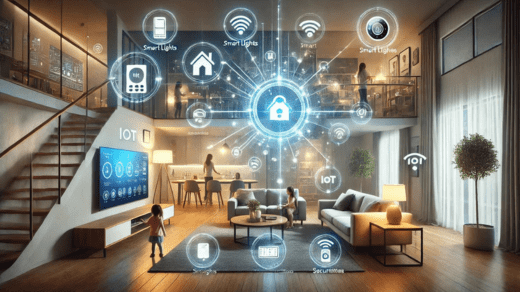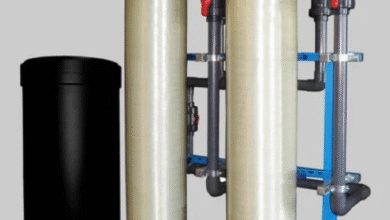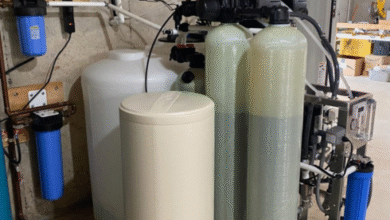The Impact of IoT on Home Automation

Home automation using IoT is transforming the way we interact with our living environments. By leveraging the power of the Internet of Things (IoT), smart home automation systems integrate advanced technologies such as voice-controlled assistants, connected lighting, and sophisticated sensors. These innovations enable effortless control over a variety of household functions, including lighting, security, climate control, and appliances.
One key advantage of home automation using IoT is the unmatched convenience it offers. Imagine adjusting your home’s lighting, changing the thermostat settings, or securing your property—all through a simple voice command or a few taps on your smartphone. This not only simplifies daily routines but also promotes energy efficiency and enhances the safety of your home.
What Does Modern Home Automation Involve?
Modern home automation revolves around IoT-enabled devices that connect to the internet, allowing you to manage electronic systems from virtually anywhere. Whether you’re turning on lights, adjusting the air conditioning from the comfort of your couch, or monitoring security cameras while away, smart home automation using IoT has made these tasks more intuitive and accessible.
These smart devices work together through IoT, providing remote control and automation of home systems, which adds a layer of convenience and peace of mind no matter where you are. Leading brands like Legrand are at the forefront of integrating these technologies into modern homes.
The Interconnection of IoT and Home Automation
The Internet of Things (IoT) encompasses a network where devices are interconnected and can communicate with one another and with users. In the realm of home automation, IoT plays a crucial role in enabling the control, monitoring, and automation of household systems and appliances. This integration makes everyday tasks more efficient and reduces the need for manual intervention.
Harnessing home automation in IoT improves comfort and convenience. The best home automation devices, including those from Legrand, offer a cohesive, user-friendly experience that simplifies home management.
How Does Smart Home Automation Work?
Smart home automation relies on electronic systems and personal devices that communicate through protocols such as Wi-Fi and Bluetooth. These systems are typically controlled by remote controls or voice-activated assistants like Amazon Alexa or Google Assistant.
Home automation using IoT generally encompasses three key processes:
● Monitoring: Smart devices, including security cameras and sensors, allow you to monitor your home remotely. You can check live video feeds or receive alerts about unusual activities, ensuring you’re always connected to your home.
● Control: Apps that offer remote control enable you to manage your home’s systems from any location. For example, you can pre-cool your home by adjusting the thermostat before you arrive, enhancing comfort and efficiency.
● Automation: Automation involves setting up specific actions that occur based on certain triggers. For example, a security system could automatically sound an alarm if motion is detected by a surveillance camera, providing quick and precise responses.
The Rising Trend of IoT Home Automation
Home automation using IoT is steadily gaining popularity, with a wide range of smart devices, such as lighting systems, thermostats, locks, video door cameras, and security cameras, leading the charge. These technologies not only make your home smarter but also more energy-efficient and secure.
In India, the adoption of smart home automation is on the rise, with brands like Legrand expanding the availability of IoT-enabled devices. These developments are part of a broader trend towards creating smarter, more efficient homes.




